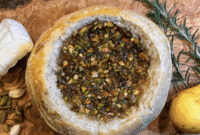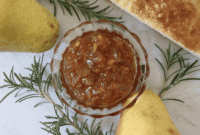Did You Know What Your Toddler Eats Can Affect Their Behavior?
If you’re juggling daily tantrums or trying to feed a strong-willed toddler, you’re not alone. Many parents don’t realize that what’s on their toddler’s plate may play a bigger role in their behavior than they think. Food fuels your child’s little body, but it also affects their mood, focus, and ability to handle frustration.
When mealtimes turn into battles or your toddler seems extra cranky or unpredictable, it might be time to look not just at how you’re feeding them, but what you’re feeding them. Some common foods can spike energy one minute and cause meltdowns the next.
Understanding Toddler Tantrums and Food Triggers
Strong-willed behavior is often your toddler’s way of showing they want more control and independence. As they grow, toddlers are naturally curious and eager to explore, but they don’t always have the words to express their feelings. This can lead to frustration, which comes out as stubbornness, yelling, or tantrums.
At the same time, the foods your toddler eats can affect how easily they regulate those big feelings. Foods high in sugar or artificial additives can make it harder for your toddler to stay calm or focused. When your toddler is already working hard to express themselves, these foods can add fuel to the emotional fire.
How Food Affects Toddler Behavior
It’s not just about the sugar crashes. Some additives, preservatives, and artificial colors have been linked to increased hyperactivity and mood swings in children. On the flip side, foods rich in protein, healthy fats, and whole grains support steady energy and brain function—helping your toddler stay calmer and more balanced.
Keeping your toddler’s diet balanced can feel overwhelming, but even small changes can make a noticeable difference—especially when it comes to toddler tantrums and food triggers. Think of food as one important tool in your parenting toolkit for managing behavior.
How to Make Mealtime Easier (Without the Power Struggles)
Mealtimes with a strong-willed toddler can feel exhausting. When your child refuses food or throws a tantrum at the table, it’s easy to feel frustrated or stuck. But there are ways you can make these moments smoother—for both of you.
Stay Calm and Steady
When your toddler starts to get upset, your calm presence can be like an anchor. It shows them that you’re there to support—not to battle. Taking deep breaths or pausing before you respond helps you keep control and shows your child you’re in charge without raising your voice.
Validate Their Feelings
Sometimes all your toddler needs is to feel understood. Saying something simple like “I see you’re upset because you don’t want to eat right now” lets them know you’re paying attention to their emotions. This acknowledgment alone can reduce the intensity of a tantrum.
Set Clear Expectations
Before meals, gently remind your toddler what behavior you expect. Simple rules like “We sit at the table while we eat” or “We try at least one bite” give your child structure and clear boundaries. Make sure your expectations are realistic and consistent every day.
Offer Simple Choices
Toddlers crave control. You can satisfy this by offering limited choices, like “Would you like carrots or cucumbers with dinner?” or “Do you want your milk in the blue cup or the red cup?” This helps reduce power struggles and lets your child feel involved.
Avoid Becoming a Short-Order Cook
It’s tempting to make a separate meal when your toddler refuses what you’ve prepared. But sticking to a few healthy options and letting your child choose what and how much they eat teaches them to trust the process and accept boundaries.
Feeding a Strong-Willed Toddler: Tips That Help
Your toddler isn’t trying to be difficult—they’re figuring out the world and their place in it. Feeding them can be a chance to build trust and teach healthy habits.
-
Get Them Involved
Kids love to help. When your toddler helps wash veggies, stir batter, or set the table, they feel empowered and are often more interested in eating what they helped make.
-
Keep Meals Fun and Varied
Use colorful plates, make fun shapes with food, or serve new foods alongside familiar favorites. Variety helps your toddler’s palate develop and keeps mealtime exciting.
-
Practice Patience
Some days your toddler might eat like a champ, other days barely touch their food. This ebb and flow is normal. Trust that their appetite will balance out over time.
-
Praise Small Wins
Notice and celebrate when your child tries a new food, takes a bite without fuss, or stays seated at the table. Positive feedback encourages them to repeat those good habits.
Recognizing When Food May Be Affecting Behavior
You may start to notice patterns. Does your toddler seem extra wild after certain snacks? Are tantrums worse after meals with processed foods or sugary treats? Keeping a simple food and behavior journal for a week can help you spot connections.
Common foods to watch for include:
-
Sugary cereals and snacks
-
Artificial colors and dyes (often found in candy, juice drinks, some crackers)
-
Foods high in refined carbs (white bread, cookies)
-
Caffeine (yes, it’s in some sodas and chocolate)
What to Include Instead
To support calmer moods and better behavior, focus on:
-
Protein-rich snacks like cheese, yogurt, nuts (if no allergies)
-
Whole grains like oatmeal or whole wheat bread
-
Fresh fruits and veggies
-
Healthy fats from avocado, nut butters, or olive oil
Balancing carbohydrates with protein and healthy fats helps keep energy steady and moods more even.
Free Guide: Foods That May Trigger Tantrums
Grab this quick-reference free guide to help you spot common food ingredients that can impact toddler behavior—plus healthy alternatives to make calmer meals a reality.
The Big Picture: Food and Behavior Are Connected
When your toddler’s behavior feels unpredictable or explosive, it’s tempting to blame “terrible twos” or mood swings. But understanding how food impacts their mood and brain function gives you a powerful way to support them.
You don’t have to overhaul everything overnight. Start small—maybe swapping out sugary snacks for fruit or adding a protein-rich option at snack time. Notice how your toddler’s mood and tantrums respond. You might be surprised by the difference a few simple food changes can make.
Final Thought
You’re doing an amazing job navigating toddlerhood. With a little more awareness about how food affects behavior—and some calm, consistent strategies—you can support your child’s growth, mood, and mealtime habits. Mealtimes don’t have to be a battleground. Together, you and your toddler can create calmer, happier moments around the table.
You may also like these related posts:
All blog content shared through HealthSmart! Kids is for informational purposes only and not to be construed as medical advice. Always talk with your qualified health care provider for managing your health care needs.
Disclaimer: This content was automatically imported from a third-party source via RSS feed. The original source is: https://www.healthsmartkids.net/post/managing-strong-willed-toddler-behavior-tips-for-feeding-and-taming-tantrums. xn--babytilbehr-pgb.com does not claim ownership of this content. All rights remain with the original publisher.



